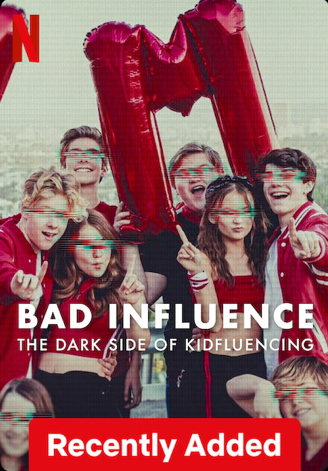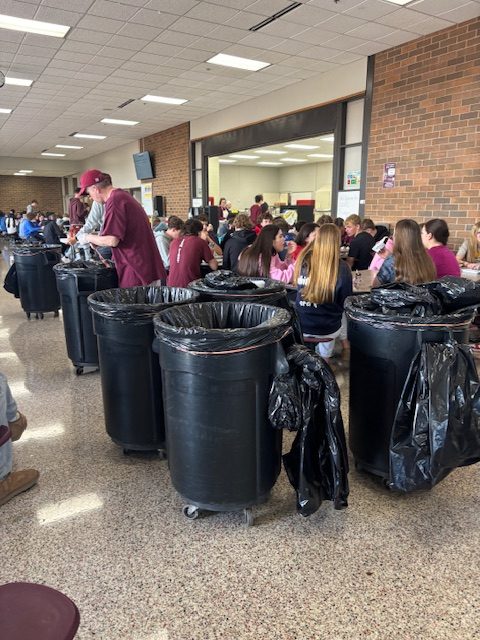Ever since ready-to-wear clothing came into existence in the mid-1800s, fashion trends have been fluctuating and evolving. The iconic style of the 80s is easily identifiable by bright colors and vibrant patterns. 60s fashion was much more formal and elegant than it is today; high heels and long dresses were considered everyday outfits. Fashion has always been a major characteristic of time periods, and iconic styles have become indicators of entire decades – when you see a poodle skirt, you immediately connect the flouncy piece of clothing to the 1950s. So what is the big deal with fashion? Why are trends suddenly so harmful? And why should we care?
In the past, clothing trends have been relatively general and vague, popularizing a wide variety of clothes and only rotating every couple of years. Recently, however, clothing and fashion trends have been changing faster than ever. The emergence of social media and online shopping sites in the last decade has contributed greatly to the growth of the fashion industry. Social media influencers seem to be promoting a new item every week, and these ultra-specific microtrends become popularized in mere hours. This results in severe overconsumption among teenagers and social media users and affects the environment greatly.
One great example of these trends appearing at Dowling is last year’s UGG craze. It began when the Tasman-style UGGs became popular among social media users and heavily promoted on TikTok. The chestnut-colored slippers began to appear at Dowling more and more frequently as an increased number of people bought into the trend. According to the brand’s press release, sales on the UGG Tasman alone flew up to $610.5 million, and online searches for the shoe jumped a shocking 2,340% last year. Right as the shoe reached the summit of its popularity, a lighter, sandy color became the new favorite. Suddenly, most who had purchased the chestnut color wanted to wear the lighter shoes instead, and the chestnut shoes were abandoned and replaced. As winter approached, however, a new shoe was making its way from the For You Page to people’s Christmas lists, and the UGG minis made their first appearance. Soon, all the UGG Tasmans that had been tramping through the school for the past few months turned to mini UGGs in all different colors. This evolution from chestnut Tasmans to platforms to caribou color to mini UGGS only lasted a few months and left dozens of people owning multiple pairs of the same shoe.
The example of UGGs at Dowling is only one puzzle piece in the gigantic jigsaw that is overconsumption. Countless new makeup brands, skincare products, water bottles, clothes, and accessories are being marketed to social media users every day. People are buying more products than they could use in a lifetime. Elementary school girls spend money on skin products they have no need for, and people buy new outfits for every occasion – sometimes even for no occasion at all – simply because access to them is only one click away.
So why is overconsumption such a problem for the environment? Increased consumption means that fashion companies are experiencing higher demand. In response, fast fashion companies produce cheap clothing to satisfy customers’ wants as quickly as possible. They produce mass amounts of clothing, drying out water sources and polluting rivers in the process. Studies by the UN Environment Programme have shown that fashion production alone causes 10% of global carbon emission rates.
Unfortunately, this is not all that is problematic. Because microtrends cycle through and end so quickly, the trend is usually obsolete before most companies can even sell the mass amounts of clothing they produce. This means that the mounds of fabric and tons of natural resources they’ve used up were all for naught. Worst of all, while these formerly trendy items are being carted off to landfills, a new fad has already begun and will undoubtedly meet the same fate as all trends before it.
But we hold the power to stop the dangerous cycle of overconsumption. Quite simply, the answer is to stop buying into trends you see on social media. If you already have a makeup brand you trust and use often, stick to it. Don’t buy a whole new set just because you can. If you have a pair of shoes for every occasion – casual, formal, or in between – think before you buy another pair. Small, everyday actions like this can help reduce the demand for fast fashion items and slow down environmentally unfriendly production processes. Hopefully, society as a whole can back down from the unhealthy overconsumption lifestyle and make a change. To do this, we all need to make small sacrifices. Change begins with individual people. Will it begin with you?






































![All are welcomed to admire the Dowling Catholic Ofrenda that will be on display in the Narthex for just over a month, starting October 24th. [Artwork by Carter Coppola]](https://dowlingcatholicpost.com/wp-content/uploads/2023/10/Ofrenda-927x1200.jpg)








Charlene Flood • Nov 14, 2024 at 10:55 am
As a social Justice teacher, I’m glad to see a student highlighting the dangers of overconsumption. The example of the UGG craze here at Dowling was a great way to illustrate how quickly trends can change and how that fuels unnecessary buying. I hope your ending call to action leaves your readers not only thinking, but also taking action.